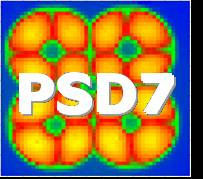Prof.
Timothy Sumner
(Imperial College London)
15/09/2005, 11:15
Detectors for Astro-Particle Physics
Invited Talk
Mr
Hiroyuki Sekiya
(Kyoto University)
15/09/2005, 11:45
Detectors for Astro-Particle Physics
Contributed Talk
Time Projection Chamber (TPC) has been recognized as a potentially
powerful detector for the WIMPs search by measuring the directions
of nuclear recoils, in which the most convincing signature of WIMPs
caused by the earth’s motion around the Galaxy appears [1]. Since
the energy deposits of WIMPs to nuclei are only a few tens of keV
and the ranges of nuclei are limited, such TPCs...
Prof.
Brian Fulton
(University of York)
15/09/2005, 12:00
Detectors for Astro-Particle Physics
Contributed Talk
When Pauli first postulated the existence of the neutrino, he
suggested that it would have no charge and no mass. This view held
for almost 70 years, but a few years ago results from solar and
atmospheric neutrino studies, now confirmed by terrestrial
accelerator and reactor measurements, revealed the phenomenon of
neutrino oscillations. This is the changing of one type of neutrino...
Mr
Alex Lindote
(University of Coimbra)
15/09/2005, 12:15
Detectors for Astro-Particle Physics
Contributed Talk
ZEPLIN III is a xenon detector for direct dark matter searches soon
to be deployed underground at the Boulby mine (North Yorkshire, UK).
This two-phase (liquid/gas) system will look for the rare nuclear
recoils that should be produced by elastic scattering of Weakly
Interacting Massive Particles (WIMPs) off xenon atoms.
Neutron interactions can also cause nuclear recoils and...
